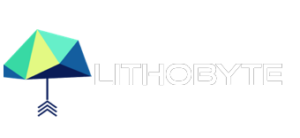Decreasing Bias in Hiring Technical Roles
Many tech companies are not terribly diverse. There are a lot of reasons for this, but today, I’d like to talk about some of the ways bias creeps into hiring, and what to do about it.
Coding Challenge Format
The standard whiteboarding technical interview is completely broken. It tests for skills that are practically orthogonal to modern software engineering – when a company I work with requires me to evaluate candidates based on a whiteboarding interview, I routinely walk out of them having no idea whether the person I just spoke to will be good at the job I need them to do. Few companies need programmers who can write code in high pressure environments, by hand, on a whiteboard, in front of an audience of other developers whose job is to pass judgement.
However, many companies do need developers who can translate business requirements into code, use the best tool for the job, and integrate it into existing codebases. Luckily, testing for such skills is pretty straightforward. I ask candidates to add a feature to a dummy product that is related to the business of the company hiring them. In this way, you can test how the candidate would write code in an environment that’s similar to the one they’re entering.
Now, whiteboarding is supposed to test for ‘problem solving,’ and many programmers would complain that this format takes away that part. So, I usually try to add some sort of twist to give the candidate a challenge or two so that we can evaluate problem solving as well as platform knowledge.
Evaluation
Another issue with whiteboarding is that it’s often biased in favor of white males. People have implicit expectations of who will be right and who will be wrong, and what a good programmer looks and sounds like. All of which has nothing to do with actually writing code!
There are plenty of examples where even submitted code gets analyzed in a more or less harsh manner depending on whether the name/screenname appears masculine or feminine (for instance, this study about gender and Github pull requests).
To mitigate this aspect of the process, it’s important to anonymize the candidate’s submitted code before evaluating it. I like to have the team review it with no names or other gender/ethnicity signifiers and then either have a conversation about, or numerically score it on various agreed upon criteria. Forming a ‘blind’ opinion helps inform the decision once the person comes to meet the team.
Culture
Having concluded the technical evaluation, it’s just a matter of determining cultural fit, which varies by company. In addition to the standard reference checking, I find it important to get to know the candidate outside of a work setting and ask them some questions on something they’re opinionated about. The key here is to see how they respond to that probing, and how well they can take into account someone else’s point of view – empathetic employees can almost always be reasoned with. If possible, I try to get people with several different backgrounds to meet with them, to see if they treat different groups differently. In this way you can not only hire diverse folk, but develop a culture that welcomes people from diverse backgrounds.

